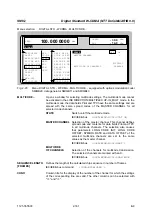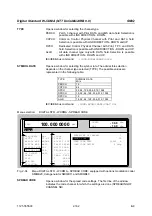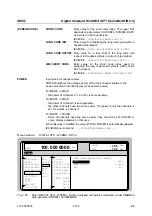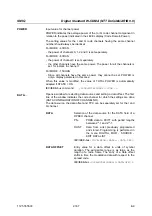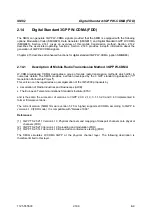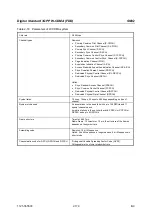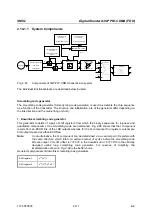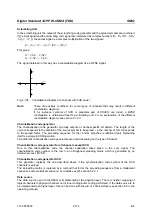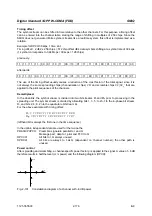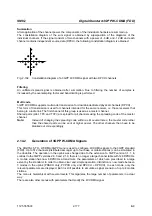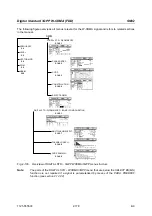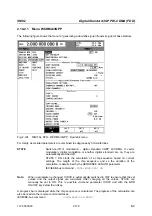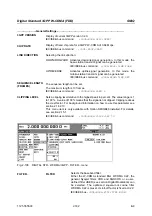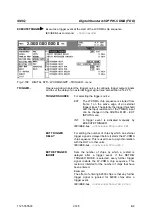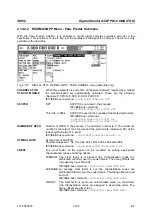
Digital Standard 3GPP W-CDMA (FDD)
SMIQ
1125.5555.03
E-9
2.174
Scrambling Unit
In the scrambling unit, the output of the scrambling code generator and the spread symbols are combined.
If the input signal and the scrambling code signal are interpreted as complex numbers (
C
i
, C
q,
SC
i
, SC
q
'
∈
{ -1, +1 }
), the output signal is a complex multiplication of the two signals:
S
i
+ j S
q
= (C
i
+ j C
q
) * (SC
i
+ j SC
q
')
This gives:
S
i
= C
i
SC
i
– C
q
SC
q
'
S
q
= C
i
SC
q
' + C
q
SC
i
The signal obtained in this way has a constellation diagram like a QPSK signal:
Si
Sq
1
1
-1
-1
-2
-2
2
2
Fig. 2-100
Constellation diagram of a channel with 0 dB power
Note
:
There are auxiliary conditions for some types of channels that may result in different
constellation diagrams.
If, for instance, symbols of SCH or preamble part of PRACH are coded, a BPSK
constellation is obtained without the scrambling unit. For an explanation of the different
constellation diagrams see section 2.14.3.
Channelization code generator
The channelization code generator cyclically outputs a channel-specific bit pattern. The length of the
cycle corresponds to the duration of the source symbol to be spread, i.e. the number of bits corresponds
to the spread factor. The spreading sequence for the I and Q branches is identical (real). Spreading
itself is a simple EXOR operation.
Two different channelization code generators are used depending on the type of channel:
Channelization code generator for all channels except SCH
Due to this channelization code the channel separation takes place in the sum signal. The
channelization code number is the row in an orthogonal spreading matrix which is generated by an
iterative process (OVSF).
Channelization code generator SCH
This generator replaces the one described above if the synchronization code symbol of the SCH
channels is spread.
The spreading matrix is replaced by a method that forms the spreading sequence from a Hadamard
sequence and a statistical sequence. For details see [2], section 5.2.3.1.
Data source
The data source used in the SMIQ is implemented at the physical layer. There is neither mapping of
logical channels to physical channels nor is inner coding/outer coding performed. If the data source is to
be implemented at a higher layer, this can be done with the aid of a file interface (see section 5.6 in the
operating manual).


